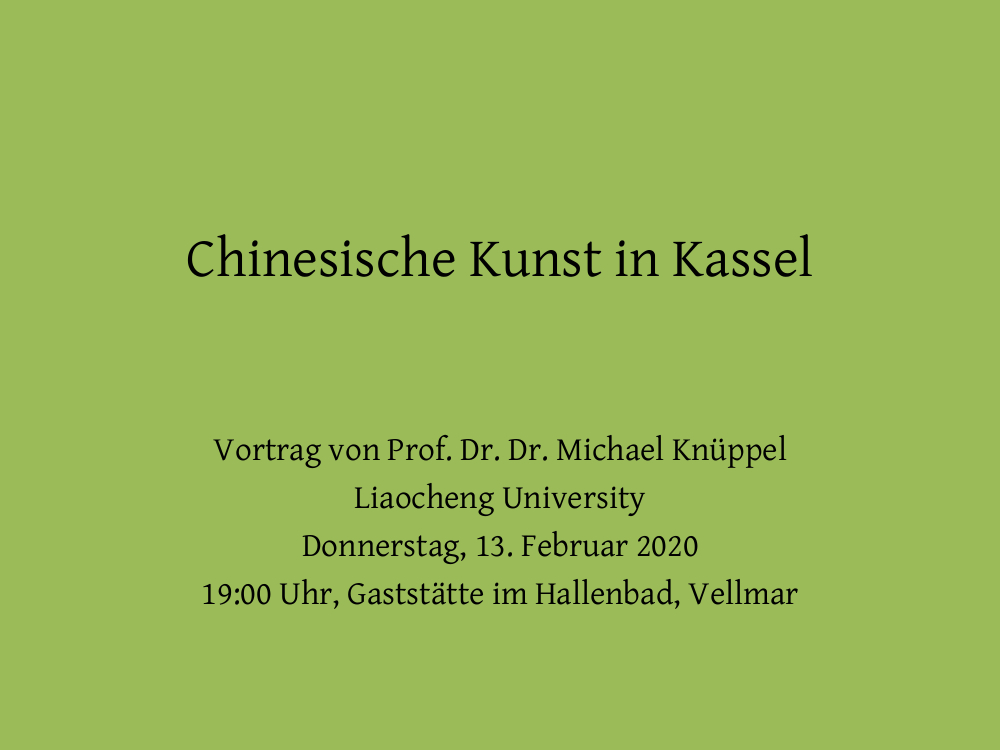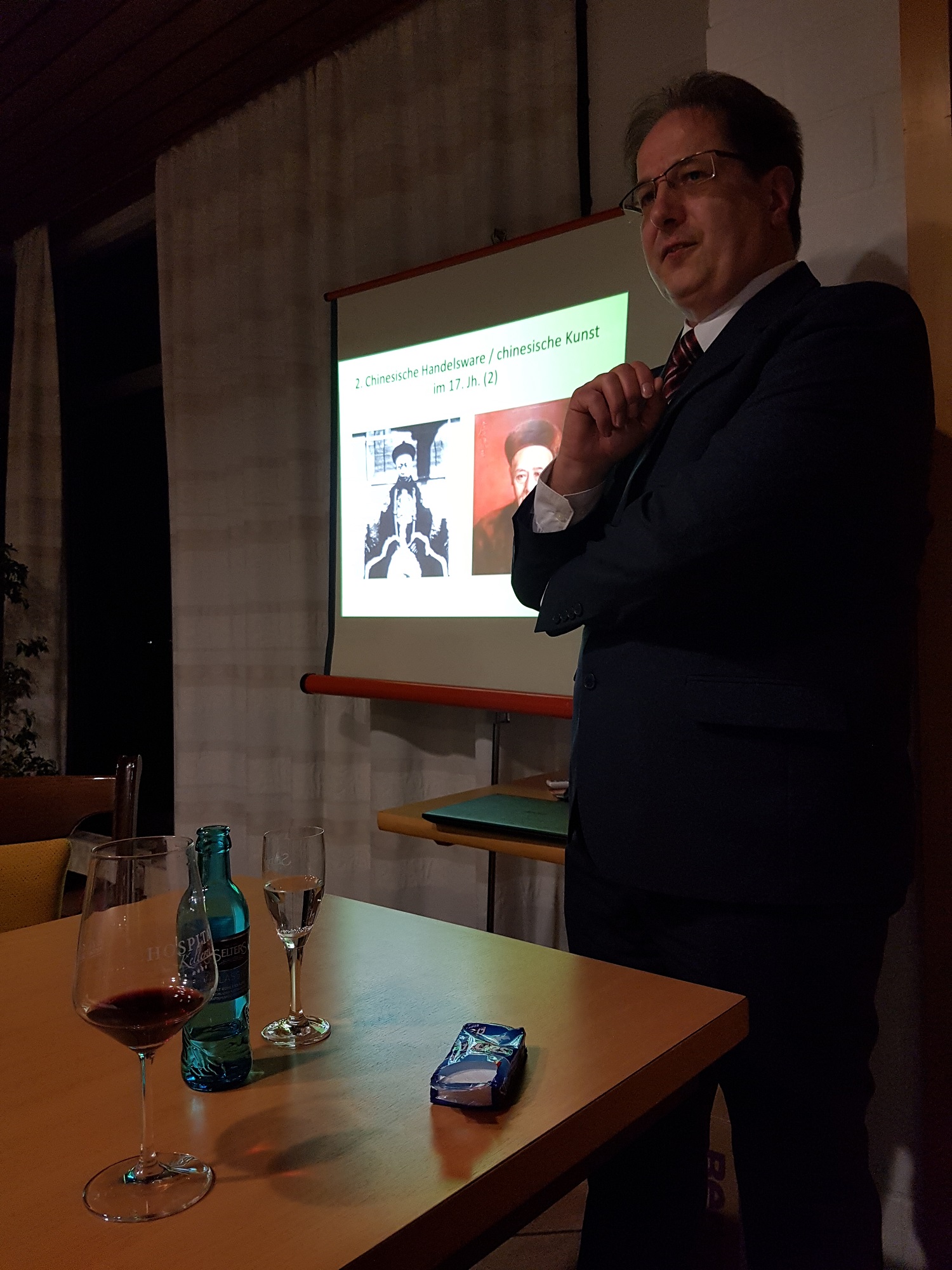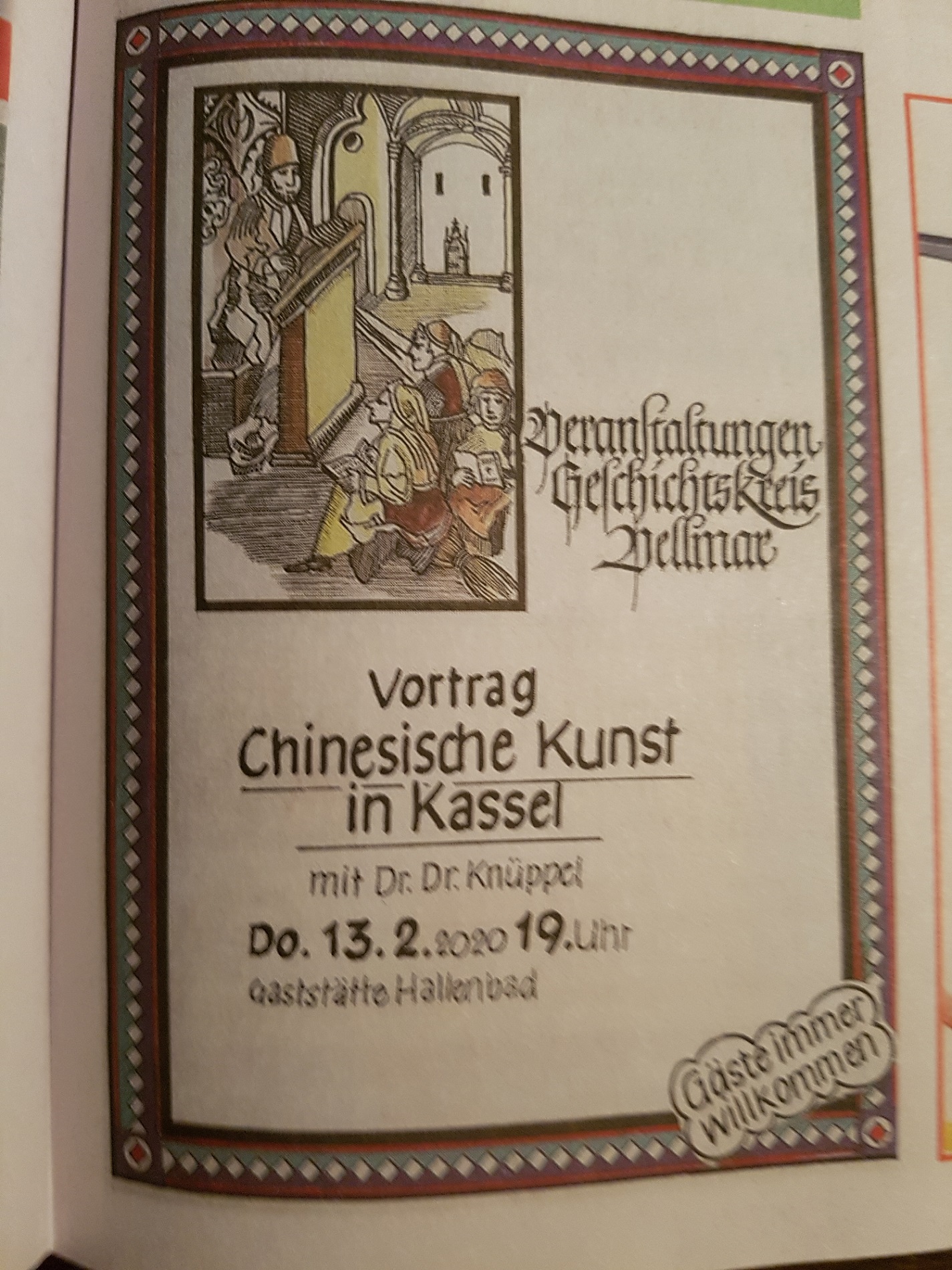Professor Michael Knüppel delivered a lecture „Chinese art in Kassel“ in Kassel, Germany
On Thursday, February 13, 2020 the Geschichtskreis Vellmar [local historians] invited guests to a lecture of Prof. Dr. Dr. Michael Knüppel in Kassel, Germany, who is working at Liaocheng University / China and doing some research there on anthropology and linguistics of the Arctic people since 2018. The lecture took place in Vellmar. The topic of the lecture have been the examples of Chinese art, which have found their way to Northern Hessia from 17th century onwards as well as Chinoiseries, that were fabricated by artists from Middle Europe using Chinese „patterns“ (or to be exact European ideas about such „patterns“) and can still be found in parks, museums and public collections. The referee described the Chinese luxury goods like porcelain, lacquered works, furs and silk in the framework of overseas trade, the activities of collection undertaken by Amalia Elisabeth of Hessia and her son, landgrave Wilhelm VIII., the reflection of Chinese art by the Chinoiseries, that we can find in the shape of furniture, wall papers, porcelain works, „Chinese“ gardens and architekture, especially the so-called „small buildings“ („Kleinbauten“) (e.g. pavillons or teahouses) and the numerous examples for these in Kassel. M. Knüppel especially dealt with landgrave Friedrich II. and his „Chinese village“ Mulang (Mou-lang), that was designed and built by his court architect Simon Louis du Ry in the park of Wilhelmshöhe from 1781 onwards. In his presentation accompanied by numerous images the referee has shown many examples we can still find in the parks of Kassel, but also in the Hessisches Landesmuseum (in Kassel) as well as historical buildings lost during the last two centuries.



